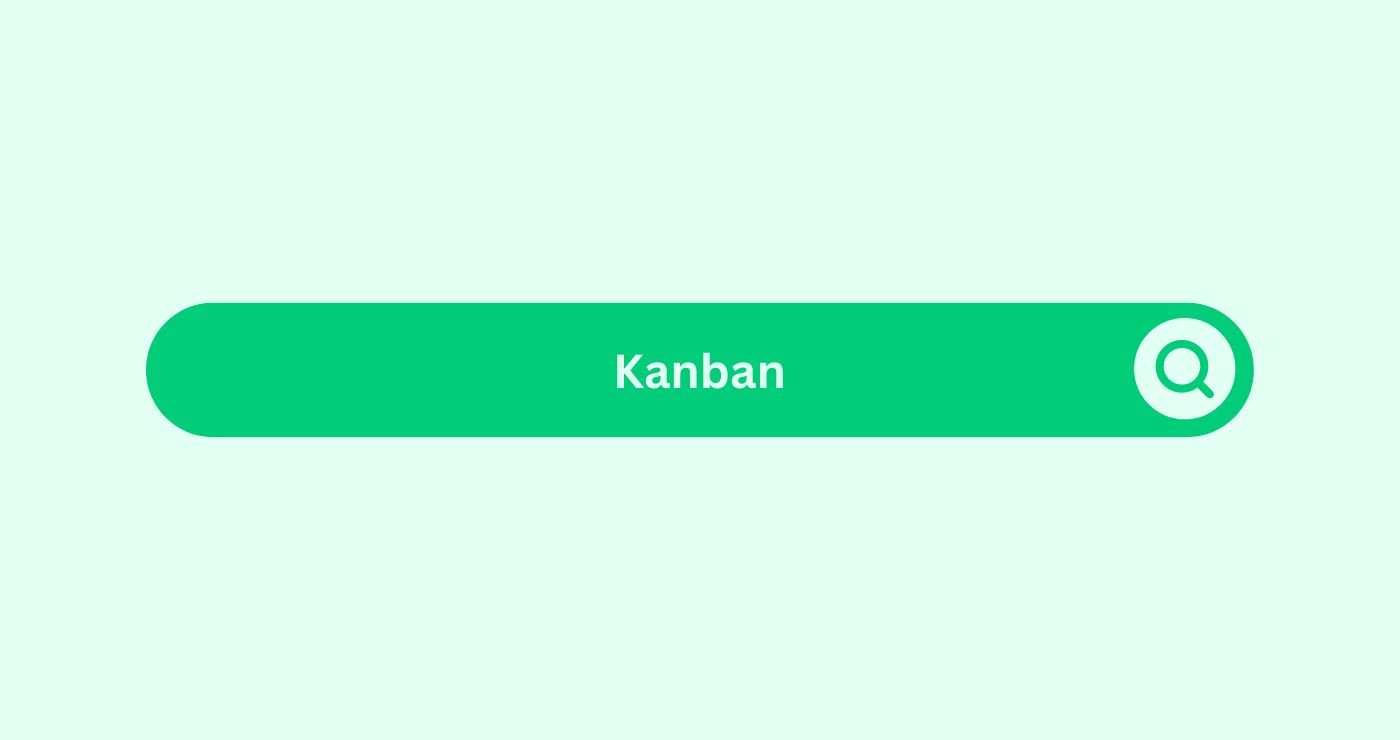Definition
Kanban practitioners use this visual workflow management method in various industries to enhance productivity and optimize the flow of work. The method, originating from Toyota’s manufacturing system, helps teams visualize their work, limit work-in-progress (WIP), and maximize efficiency. A Kanban board is utilized, typically divided into columns representing different stages of a process, such as “To Do,” “In Progress,” and “Done.” Each task moves through these columns as it progresses from start to completion, represented by a card.
Kanban follows just-in-time (JIT) production principles, focusing on delivering what is needed, when it is needed, and in the quantity needed. By visualizing work, identifying bottlenecks, and continuously improving, Kanban aims to streamline operations, reduce waste, and enhance team collaboration. This methodology is flexible and can be adapted to various workflows, making it ideal for both manufacturing and knowledge work environments like software development, marketing, and project management.
How You Can Use
Example
Consider a digital marketing team managing multiple campaigns simultaneously. To optimize their workflow and ensure timely delivery, they implement Kanban. Here’s how they can use Kanban effectively:
- Visualise the Workflow: The group builds a Kanban board with the following columns: “Backlog,” “Planning,” “In Progress,” “Review,” and “Completed,” which stand for the various stages of the workflow.
- Add Task Cards: Each campaignDefinition An SEO campaign involves focused, Organised effor... task, such as content creation, social mediaWhat is Social Media? Social media refers to online platform... posting, or email marketingDefinition
E-mail marketing uses targeted messages t..., is represented by a card. These cards contain details like task description, deadline, and assigned team member. - Limit Work-in-Progress (WIP): To avoid overloading team members and ensure focus, the team sets WIP limits for the “In Progress” column. For instance, they might decide that only five tasks can be in progress at any given time.
- Track Progress and Identify Bottlenecks: As tasks move through the columns, the team can easily see where work is piling up. If tasks linger too long in the “review” stage, it indicates a bottleneck that needs addressing.
- Continuous Improvement: The team holds regular retrospectives to review their process, discuss challenges, and implement improvements. They might adjust WIP limits, redefine workflows, or add new columns as needed.
Calculations
To optimize Kanban workflows, certain calculations can be useful:
- Cycle Time: Measure the time it takes for a task to move from the start to the end of the workflow. Shorter cycle times indicate more efficient processes.
- LeadDefinition A Lead in the context of SEO refers to a potentia... Time: Determine time for task completion from request initiation. This helps in understanding overall efficiency and customer satisfaction.
- Throughput: Track the number of tasks completed in a specific period. Higher throughput suggests a more productive team.
Key Takeaways
- Visual Workflow Management: Kanban helps teams visualize their work process and manage tasks efficiently.
- Work-in-Progress Limits: Limiting WIP ensures focus, reduces multitasking, and prevents bottlenecks.
- Continuous Improvement: Regular retrospectives help teams continuously refine their processes.
- Flexibility: Kanban is adaptable to various industries and workflows, making it versatile.
- Performance MetricsWhat are Metrics in the context of SEO? Metrics in SEO refer...: MetricsWhat are Metrics in the context of SEO? Metrics in SEO refer... like cycle time, leadDefinition A Lead in the context of SEO refers to a potentia... time, and throughput are essential for evaluating and improving productivity.
FAQs
What is Kanban?
Kanban is a visual workflow management method that helps optimize work processes and enhance productivity.
How does Kanban work?
Kanban uses visual boards and cards to represent tasks and stages of a workflow, allowing teams to manage and track progress efficiently.
Why is Kanban important?
Kanban improves workflow visibility, limits work-in-progress, and promotes continuous improvement, leading to better efficiency and productivity.
How can I implement Kanban?
Create a Kanban board with stages of your workflow, add task cards, set WIP limits, track progress, and hold regular retrospectives for improvements.
What is a Kanban board?
A Kanban board is a visual tool used to represent tasks and workflow stages, helping teams manage and track work.
What are WIP limits?
Work-in-progress limits restrict the number of tasks that can be in progress at any given time, preventing overload and ensuring focus.
What is cycle time in Kanban?
Cycle time is the duration a task takes to move from the start to the end of the workflow, indicating process efficiency.
What is lead time in Kanban?
LeadDefinition A Lead in the context of SEO refers to a potentia... time is the total time from when a task is requested to when it is completed, reflecting overall efficiency.
How does Kanban support continuous improvement?
Kanban encourages regular retrospectives to review and refine workflows, addressing bottlenecks and enhancing processes.
Can Kanban be used in non-manufacturing industries?
Yes, Kanban is versatile and can be adapted to various industries, including software development, marketing, and project management.




